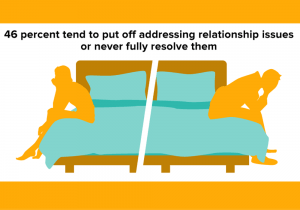
Hypoactive Sexual Desire Disorder (HSDD)
Sometimes you want sex, sometimes you don’t. That’s normal. Every woman has her own level of what is considered “normal” based on their own experiences and biology.

For some women, reaching orgasm can be difficult. Fortunately, there are steps you can take to address the problem and have a more satisfying sex life.
Problems reaching orgasm are fairly common among women. About 3 out of 4 women say they can’t orgasm through vaginal penetration alone. But there is a difference between an occasional issue and a more persistent problem—female orgasmic disorder, or FOD.
What makes the problem rise to the level of FOD? There are specific criteria for diagnosing the disorder in women:
The problem affects a sizable number of women. In the largest US study of female sexual dysfunction, including responses from over 30,000 women, the prevalence of FOD was approximately 21%.
There are many physical and psychological factors that may be involved in FOD.
Treatment will depend on the cause of the problem. If a medical condition or medication is to blame, a healthcare provider can look at ways to address the underlying issue or explore a medication change. When psychological or relationship factors are the cause, therapy or counseling may be the answer. Sex therapy can teach you to understand your own body better and learn what gives you pleasure. Couples counseling can also help couples improve communication skills and address any conflicts that may be entering with trust and intimacy. Couples might also explore a technique called sensate focus, which involves a series of exercises that focus on both nonsexual and sexual touching to improve intimacy and understand what produces pleasure in each partner.
For any woman having problems reaching orgasm, there are also some steps they can take toward a more satisfying sex life:
Listen to ASHA’s three-part conversation with sociologist and sexual health expert Dr. Pepper Schwartz on female sexual difficulties. She discusses the range of female sexual difficulties, the impact of sexual difficulties on a relationship, and offers practical advice and resources for women (and their partners). You can listen on ASHA’s website or via iTunes.

Sometimes you want sex, sometimes you don’t. That’s normal. Every woman has her own level of what is considered “normal” based on their own experiences and biology.

Sex shouldn’t hurt…But sometimes it does. Between 10% and 20% of women in the U.S. experience persistent pain during sex—a condition referred to as dyspareunia.

When a woman becomes sexually aroused, her body will respond with physical and emotional changes. For some women, though, this arousal response doesn’t happen as expected. The desire may be there, but the body or the mind (or both) don’t respond.

Sociologist, sexologist and relationship expert Dr. Pepper Schwartz joins our Sex+Health podcast for a three-part discussion on the range of female sexual difficulties and offers practical advice and resources for women (and their partners).

If you struggle with incontinence and have concerns about leaking during sex, you’re not alone. The American Foundation for Urologic Disease reports that one in three women with stress incontinence avoids sex due to fears of leaking during intercourse or orgasm. But incontinence during sex doesn’t have to be an issue.

Why aren’t couples talking about sex? Despite increasing public acceptance of sex as an everyday topic and a trend towards more empowered health consumers, people continue to feel uncomfortable talking about sexual health issues—even behind closed doors.
ASHA believes that all people have the right to the information and services that will help them to have optimum sexual health. We envision a time when stigma is no longer associated with sexual health and our nation is united in its belief that sexuality is a normal, healthy, and positive aspect of human life.
ABOUT
GET INVOLVED
ASHA WEBSITES
GET HELP
© 2025 American Sexual Health Association